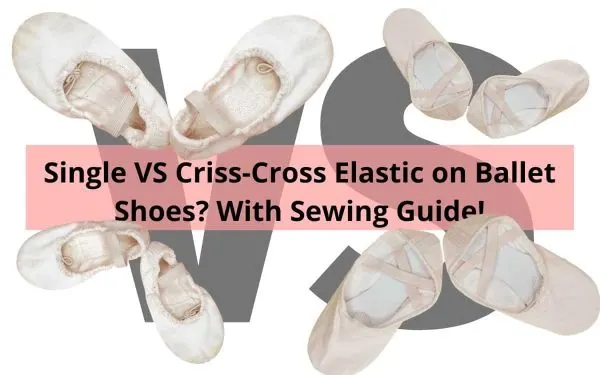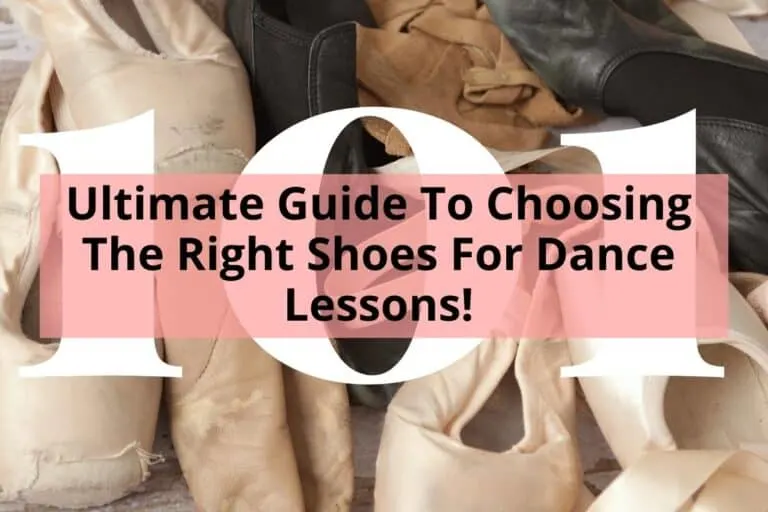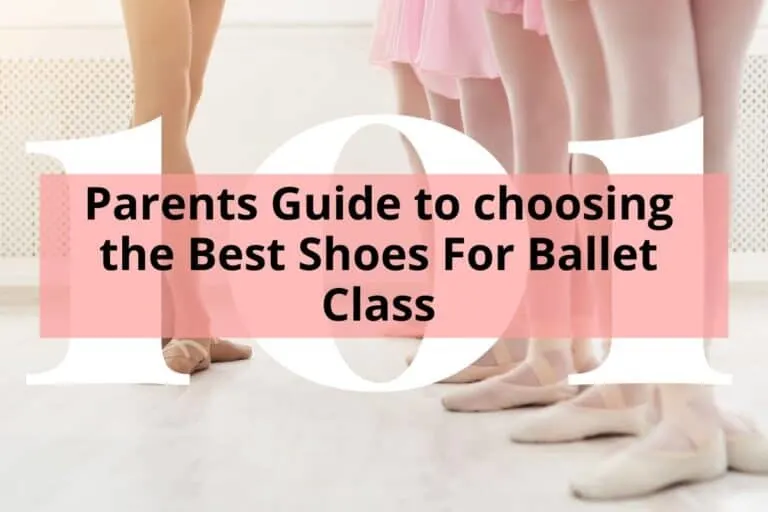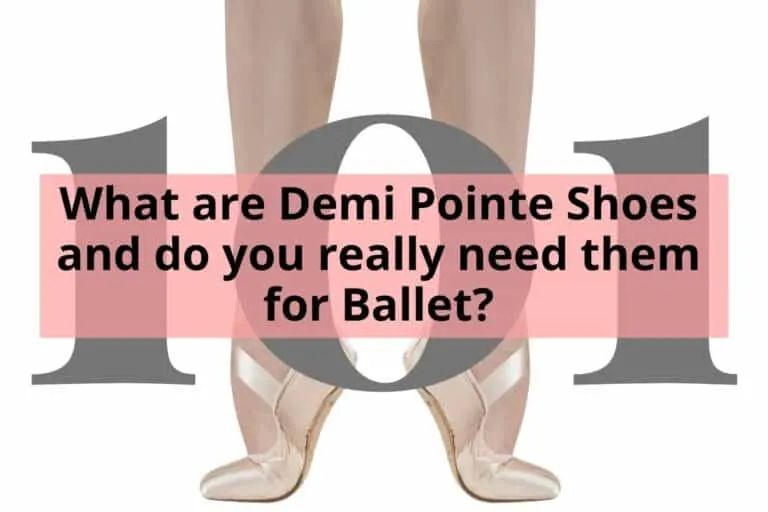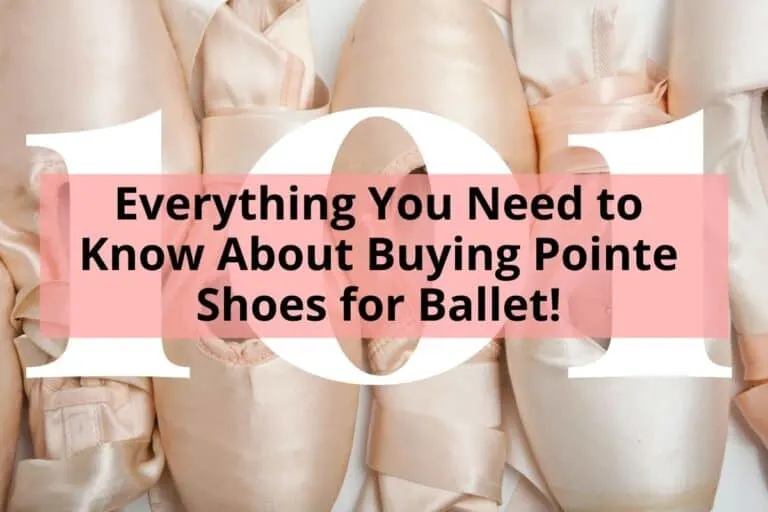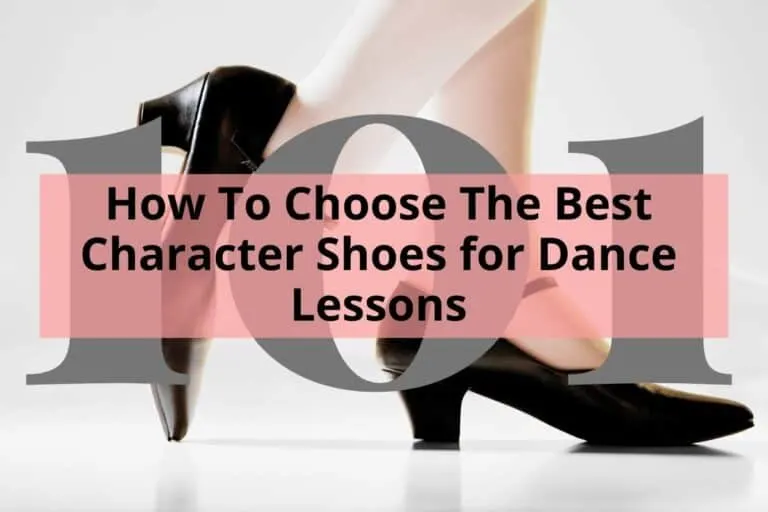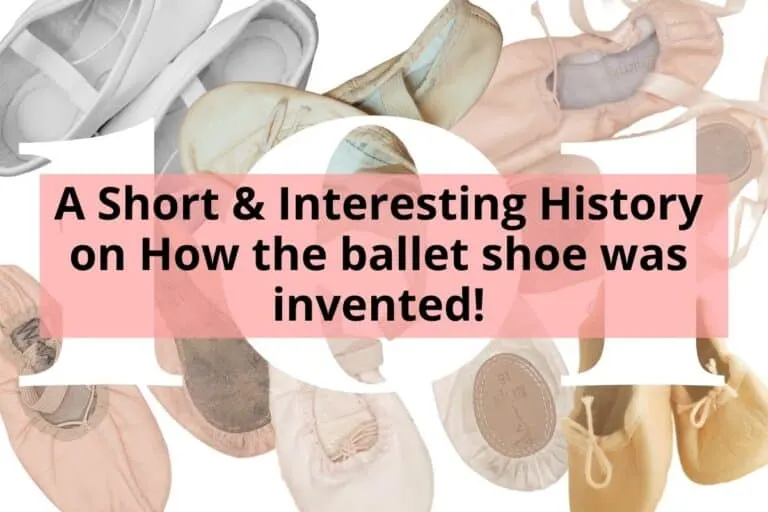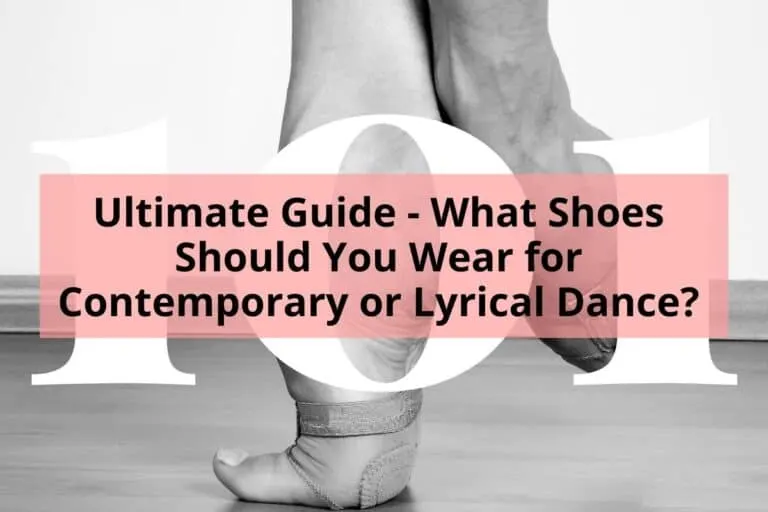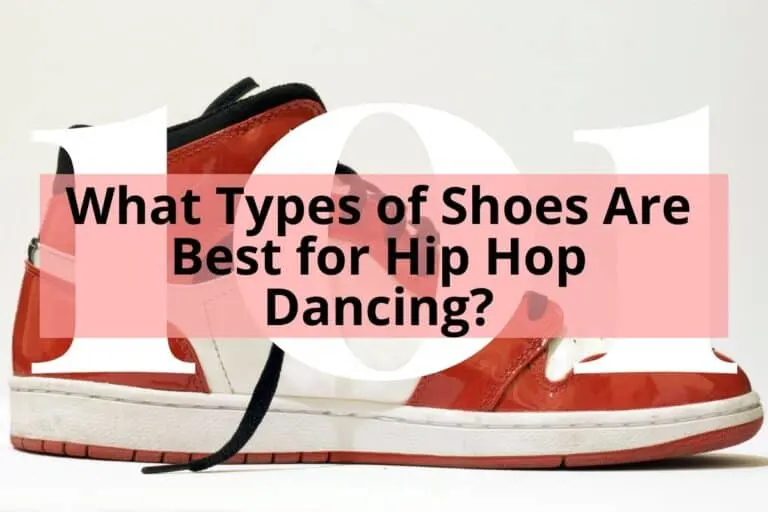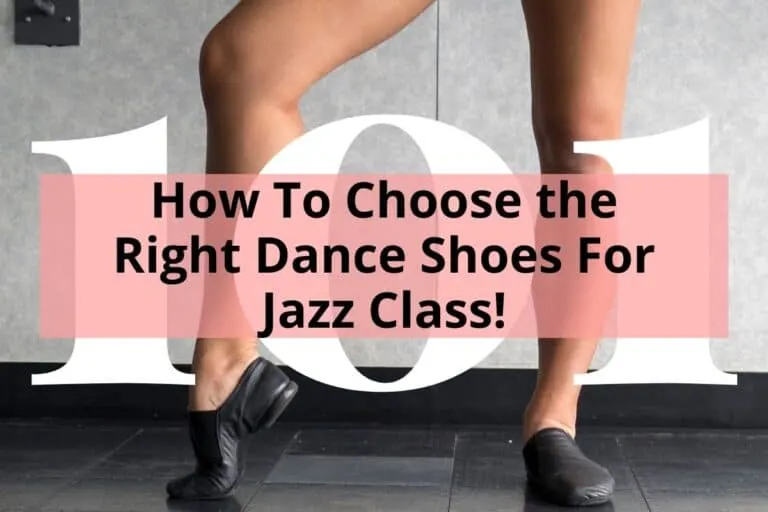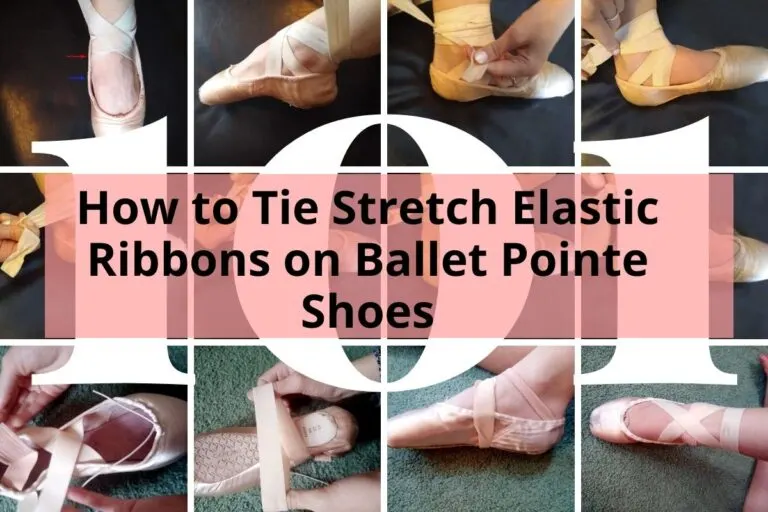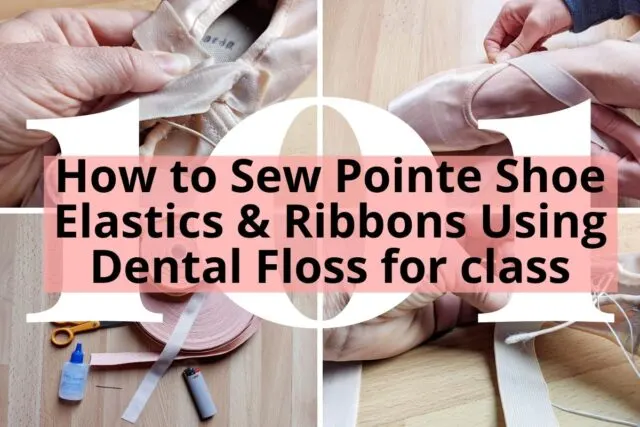Buying your child their first pair of ballet shoes is very exciting, but it can seem a little daunting, especially with the amount of choice there is out there.
This complete guide will help both the new and experienced dance parent measure, fit and buy ballet shoes for their toddler or kid.
To buy ballet shoes for a toddler or kid you need to know which material to buy, which color you need, how to measure your child’s feet properly, whether you need a full or split sole shoe, if you need ribbons, elastic or both and how to check that they fit properly once they are on.

But first, we will cover some nagging questions you might have about why your child needs ballet shoes.
Why do dancers wear Ballet shoes? Why can’t my kid just wear their socks or bare feet?
Ballet dancers, even little ones, do not wear only socks because they have little grip and the dancer will slip and slide and this can cause injury.
Ballet dancers also do not dance in bare feet as this will generally create too much friction.
The feet can get stuck when they are meant to be gliding and again this can cause injury to the dancer.
Ballet shoes provide grip on the soles and a smoother surface around the tips and tops of the toes to provide the gliding movement needed when dancing.
You can check out the article Do You Need To Wear Ballet Shoes in a Ballet Class? for more information.
Is There a Difference Between Boy and Girl Ballet Shoes?
The main difference between a young boy’s ballet shoe and a girl’s is that a boys’ shoes will not need ribbons.
Boy’s ballet shoes will need to be bought in either black or white depending on the preference of the studio you attend. Girls generally wear pink or white ballet shoes.
Boy’s feet are generally wider than girls, and as they mature can be longer, but not always. Boys and men mainly wear black or white ballet shoes and so some ballet shoemakers do especially make shoes to accommodate these differences.
But generally, there is not a lot of difference when they are children and so ballet shoes are generally unisex at this age.
Therefore this fitting guide is relevant to both boys and girls.
What should my child wear with their Ballet shoes? Socks or tights?
Generally, young boys will wear thin white ankle socks with their ballet shoes under a pair of black leggings or with a pair of shorts. You might also see them wearing black tights with black ballet shoes.
Girls can wear either thin white ankle socks with bare legs and a leotard or will wear ballet tights instead. Usually, your dance studio will advise you on what they want your child to wear.
If you are interested check out the article Socks or Tights in Ballet Shoes? Best Advice for Parents! where we have a buying guide on the best socks for kids to wear inside their shoes!
Or maybe you want to know what your toddler should wear to their class and if so why not read What do toddlers wear to a dance or ballet class?
What Are All of the Parts of Ballet Shoes?
To make sure you know what I am talking about as we delve into how to fit and measure a kid or toddler for a ballet shoe it’s important to know some of the jargon and names for the different parts of the shoe. Here is a list of what they all mean:
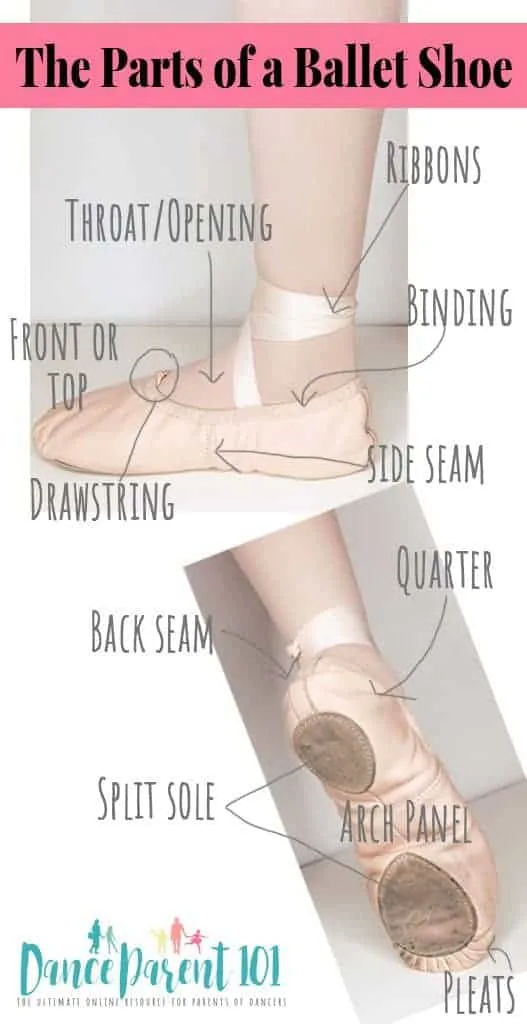
- Drawstring: This comes out of a small hole at the top of the throat of the ballet shoe and helps to tighten ballet shoes on the foot.
- Binding: Where the drawstring goes through around the throat of the shoe.
- Sole: The bottom of the shoe is usually made from a thin leather such as suede.
- Throat or Opening: The opening to the shoe.
- Insole: This is the material used inside the bottom of the shoe.
- Pleats: These are the folds of the leather under the toes of the ballet shoe.
- Arch Panel: The panel that covers the arch between the ball and heel in split sole shoes.
- Sides and Top: The sides and top of the ballet shoe.
- Quarters: If you spit a shoe into four parts straight down the middle and across, the back two parts are your quarters.
- Back Seam: Thick strip at the back of the shoe.
- Elastics or Ribbons: The fastener that holds the shoe to the foot.
KIDS BALLET SHOE MEASURING GUIDE
You will need to measure your child’s foot to work out which size ballet shoe to buy for them.
You can do this at home by measuring the length of their foot and the width at the widest point.
4 Methods To Measure Your Child’s Foot for Ballet Shoes
In all methods below you should make sure your child is standing and keep an eye on their toes, as toddlers and younger children tend to curl their toes under which will give you an incorrect measurement.
Try to get the measurements in both inches and centimeters as different suppliers will offer different sizing guides.
1. Measure Your Child’s Foot with a Ruler or Measuring Tape
Use a ruler or tape measure and measure the length of their foot.
You will want to measure the width at the foot’s widest part where the toes join onto the foot or where the toe knuckles are.
This is easier said than done and can lead to a faulty measurement being recorded if they twitch and wiggle too much because they are ticklish, which is why I have given you other suggestions.
2. Use a Professional Foot Measuring Device
If you can get your hands on one or are at a shoe store where a friendly staff member can help you, go ahead and use one of those devices made especially to measure feet.
Be careful to record the actual measurement of the foot and not just their shoe size, as ballet shoes will be sized differently to street shoes and can depend on the manufacturer.
3. Trace Around Your Child’s Foot with a Pencil On Paper
Sometimes our kids for the darndest reasons will not let us do the simplest of things such as measure their feet. They might not like the ruler, they can’t stop scrunching up their toes, or they just don’t feel like doing that activity right when we need them too!
So why not make it fun!
Trace around you childs foot on some paper.
You might want to stick it to a stable surface so it doesn’t move – the paper that is, not your child.
Measure the outline as explained above.
You might want to trace around their feet a couple more times and give your child some pencils to color them in or let them trace around your feet too, to make it an enjoyable experience and not another task you need to get done.
4. Foot Print Method
If you really can’t get an accurate measurement from the ways mentioned above why not try getting a footprint from your child?
What toddler or kid doesn’t love painting?
Get a paintbrush and cover the sole of their feet in paint and either carefully make a print of their foot or let them walk along a piece of paper you have rolled out.
Take this away to dry and put down more for them to just have fun with.
When the original is dry, take a ruler and measure both the length of their foot and the width at the widest part of the foot.
This will give you the measurements that you can match up with the shoe suppliers sizing guide.
A word of warning – make sure when walking your child is not sliding. On our first attempt, I realized the prints were longer than my daughter’s actual foot because there was so much paint on her feet she was sliding and elongating her prints!
If you have any of your own tricks, let us know about them in the comments below and I’ll add the best to the list here with your name!
KIDS BALLET SHOE FITTING GUIDE
How Should Ballet Shoes Fit on a Toddler or Kid?
For a child, a ballet shoe should be snugger then their normal shoes, but not as tight as a sock Somewhere inbetween the two is perfect.
If the ballet shoes are too tight a child will scrunch their toes and this can lead to the bad habit of doing this when pointing their toes or trying to balance.
If the shoes are too big they will fall off or cause them to trip.
I have seen kids kick their shoe to the other side of the room during exercises in dance class because their shoes were too big and slipped off. Don’t let this be your kid!
You should note that a ballet shoe on an adult should fit as snuggly as a sock.
It needs to be form-fitting and mold to the foot like a glove.
You can choose to buy your child’s shoe based on this type of fit as well, but for many parents, if their kid is only doing one or two classes a week, it doesn’t make sense to them both financially and even being environmentally aware knowing that in 6 months or less a new pair will need to be bought.
How to know you have the right fit?
The following are a few things to look at when the ballet shoes are on your child’s feet. Begin by making sure their foot is flat on the floor:
- Their toes should be flat and not curled or scrunched up?
- They should be able to wiggle their toes, but feel firmness around them?
- The width is wrong for your child if the shoe is too tight across the toes causing them to be squashed together uncomfortably.
- If you can you fit a finger in between the shoe on both sides of your child’s foot easily the shoe is to wide.
- The quarters should fit smoothly around the heel with the drawstring pulled at a comfortable tension for your child. There should not be too much bunching of the shoe.
- You should not have to pull the drawstring so tight that the shoe puckers when on or leaves marks on your child’s foot. If it is too tight it can literally cut into the back of your child’s Achilles tendon and can really hurt your child.
- There should not be a large gap in between the back seam and your child’s heel or Achilles tendon – the shoes are a size too large.
YOU KNOW THE BALLET SHOES ARE TOO BIG WHEN…
When pulling on the drawstring to tighten the ballet shoes, the shoes should not look all puckered up like a shower cap or those shoe protectors doctors and nurses wear.
They should be nice and smooth.
YOU KNOW THE BALLET SHOES ARE TOO SMALL WHEN…
You are able to see the outline of each of your child’s toes, or a mark left by the drawstring and binding. This means the shoe is too small and tight.
What to Do If the Shoes Do Not Fit?
There are two options to try if the shoes you thought would be best for your child are not fitting on their foot well.
The first is to try a size up or down from the one you chose.
The second option is to buy a shoe from a different manufacturer. Some ballet shoe companies make their shoes in a wider fit, others make their slimmer. Some give you the option of buying a narrow or wider shoe!
Should I Buy The Next Size Up So the Shoes Last Longer?
Yes it is absolutely fine to go up one half or full size in your child’s ballet shoe as long as the problems discussed previously are not present.
Kids’ feet are constantly growing and if you want to get decent use from the shoe, this will be the key to doing so.
When your kid gets older and the reason you need to buy a new pair is because they are wearing them out, rather than growing out of them, that is the time to buy a pair that fits like a glove.
For now, as long as the shoes do not fall off and do not pose a threat in causing them to trip, buying slightly bigger should be fine.
In saying this, don’t go more than one size up! Or if your child’s measurements only just meet the requirements of a size then order those, for example, the size is between 10-12cm and your child’s foot 9.5 or 10cm long, choose that size not the 12-14cm shoe!
Take a look at the next image of my daughter’s foot in her shoe. She has plenty of room to grow, but the shoe still looks smooth and firm on her foot!
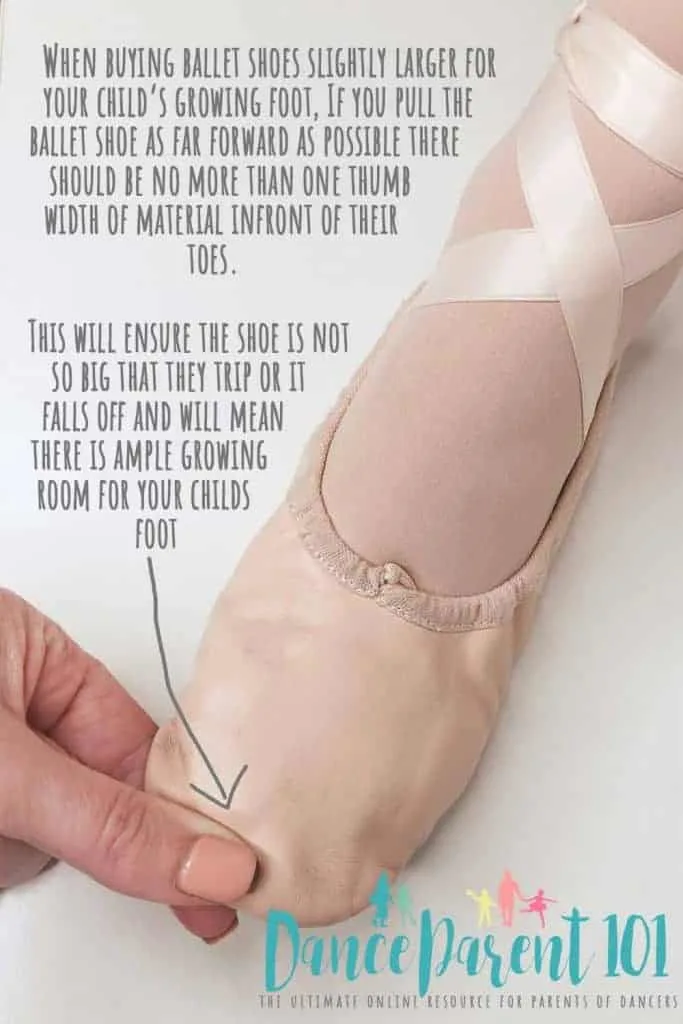
Remember when buying up a size that ballet shoes that are too big can cause your child to trip.
You use the drawstring to tighten the throat of the shoe around your child’s foot, but if they are too big the shoes will just scrunch up and leave empty space between the end of the shoe and your child’s toes and it is this extra piece of material that will cause them to fall over.
Also if they are too big, no amount of pulling on the drawstring will make them fit properly.
Be mindful that you are also going to hear a lot of dance teachers or dance and ballet shoe fitters explain to you that ballet shoes need to fit like a sock or glove and they may try to talk you out of going even a half size up….
but remember they are not the ones having to pay for the shoes!
You know your child and if you expect them to have a growth spurt soon trust your instincts!
The ballet shoes in the photos on this page were close to $40 US and I bought them with a little extra room for growth and they lasted the whole season – and you could not tell they had the extra growing space!
Do Toddler and Kid Ballet Shoes Need Ribbons or Elastics?
Most toddler’s and children’s ballet shoes will come with a single or crisscrossed double elastic.
Elastic is much easier to deal with when putting on a toddler’s ballet shoes and most teachers and studios are happy to forgo ribbons in the early years.
My daughter who is four asked me to put ribbons on her shoes.
I added them to a pair of hand-me-downs as her regular ballet shoes need only elastics for her recital and although being in preschool ballet she is not required to wear them, she loves them and sits patiently waiting for me to finish tieing them up.
Therefore whether your child’s shoes have elastics or ribbons will generally come down to your studio’s preference or how the shoes came to you with elastics if bought from a store or maybe with ribbons if from a previous owner.
Which is better for a toddler or kid – Single or Criss Crossed Elastics on Flat ballet shoes?
Some shoes are sold with a single elastic and others are sold with double crisscrossing elastics. Why and which one is best?
Single elastics are simple and make it easy for small kids to slip their ballet shoes on and off themselves. They are are quick to sew on as their placement is easy to locate as you can see in the article Single VS Criss-Cross Elastic on Ballet Shoes? With Sewing Guide!
Criss-crossed elastics can confuse younger children and they can get their feet caught up in them and may need help getting their shoes on.
Advanced dancers prefer double crossed elastics as they pull up the arch of the shoe, so it hugs the foot showing off the dancers arch and pointed toe in the best possible way.
For a toddler or child either is fine and should not really affect your choice of shoe, unless your teacher or studio has a preference for one over the other.
If the shoe does not come with elastics already sewn on, I would advise to just sew on a single one as it is much easier to do and you can follow the instructions on how to do so in our guide and video.
KIDS BALLET SHOE BUYING GUIDE
The following are three shoes you might like to take a look at online to buy. They are in order from Bloch, Capezio and the last one is a new brand Stelle. Each is an affiliate link so if you make a purchase we receive a small commission at no extra cost to you, but helps us to keep running this website.
As a dancer and mom to two dancers I have bought from both the Bloch and Capezio brand and currently own pairs of ballet shoes from each manufacturer and can confidently refer you to them. I also bought shoes online from Stelle and was happy with their quality.
What Do They Make Ballet Shoes Out Of?
Ballet shoes are made of three main materials leather, canvas, or satin. There are now also vegan leather options available, however they can be harder to come by for children’s shoes.
Some split sole ballet shoes now also have a neoprene section (wet suit material) under the arch of the foot, which hugs the foot and accentuates the arch when pointing the toe.

Why are Ballet Shoes Made from Leather?
Ballet shoes are made from leather as it is the traditional material they were initially produced from. Leather is also a popular material for ballet shoes due to it’s durability.
It is generally thought that as leather is sturdier than satin or canvas and that it supports young feet and helps to strengthen and develop correct ballet technique because it is stiffer.
Leather ballet shoes are more expensive than canvas ones, but last longer.
Leather shoes are not as easy to clean either but can be painted with flexible leather paint which generally hides any ingrained dirt from studio floors.
Leather ballet shoes will also tend to stretch and mold to a dancers foot when warm and worn a lot.
You might find if worn on the same feet all the time small indents will be seen where the big toe presses against the leather from pointing the foot.
Leather ballet shoes are worn with both ribbons or elastics.
Why are Ballet Shoes Made from Canvas?
Ballet shoes are made from canvas because they are comfortable, do not have to be worn in and are easy to clean.
Some ballet teachers will not allow their beginner dancers to wear canvas shoes because of their lack of support.
Canvas is a woven material and is not as durable as leather. Canvas ballet shoes tend to get holes around the toes more easily and need to be replaced more often.
They can be put in the washing machine on a gentle wash or hand washed.
Canvas ballet shoes are less expensive initially but as you might have to buy several pairs the cost may be similar to owning one pair of leather shoes.
Canvas ballet shoes are generally worn with elastics and not ribbons.
Canvas ballet shoes can be bought in various colors or can be dyed if needed to match the color of a costume.
Why are Ballet Shoes Made from Satin?
Ballet shoes are made from Satin because it is a pretty and shiny material, that looks great on stage!
However, satin tends to get dirty very quickly which is why satin shoes are generally worn for photos or performances.
It is also more common for satin to be used in demi-pointe and pointe shoes rather than flat ballet shoes.
Satin shoes can be worn with elastics but look nicer with ribbons and can be bought in various colors.
Some people use permanent markers to change the color of satin shoes or a special pointe shoe paint if needed although you have to be careful that the ink does not run onto your tights when wearing them.
Should I buy Leather, Canvas or Satin Ballet Shoes For my Toddler or Preschooler?
Leather ballet shoes are a perfect choice of dance shoe for children if you are unsure of what to buy.
They will generally last you if not one but maybe even two whole years of classes, and you will probably only have to get a new pair when your child’s foot grows out of them.
However if possible, speak with your dance teacher as to which type of material they would prefer.
Our first dance teacher sold us canvas split sole shoes with elastics, but our next school and teacher preferred leather ballet shoes with ribbons.
Should I buy split sole or full sole ballet shoes for a child or a toddler?
You should buy a full sole ballet shoe for your child’s first ballet shoe.
There is an ongoing theory amongst many ballet teachers that young students and those new to ballet should begin with full-soled shoes as this gives the dancer more support and creates more resistance on the floor which helps to strengthen the muscles of the foot.
But with technological advances, many new split-sole ballet shoes such as the range by MDM have strong supportive innersoles that provide the same resistance and support.
Therefore it will depend on the brand and type of shoe you buy.
Where Can I Buy or Get a Pair of Ballet Shoes for My Child?
There are six main ways you can buy or get ballet shoes for your child and I go over each one in detail in the article
The six different ways to get a pair of ballet shoes are:
- Buying Ballet Shoes From a Dancewear Store
- Buying Ballet Shoes From Your Dance School Teacher
- Buying Ballet Shoes From A Department Store
- Buying a Pair of Ballet Shoes Online
- Buying Second Hand or Using Hand Me Down Ballet Shoes
- Make your own
What Price Should I expect to Pay for Toddler or Children’s Ballet Shoes?
You will be looking at anywhere between $15-$50 US for a pair of ballet shoes for a child depending on the materials the shoe is made from and the brand.
Luckily ballet shoes tend to be the least expensive when it comes to dancing shoes in general.
Jazz and tap shoes can cost a little bit more.
The material the shoe is made from will determine largely the price of the shoes although if you buy the latest most technologically advanced shoes this will increase the price you pay a little more.
But you need to keep in mind, that the cheaper the ballet shoes are, the less quality you will receive in return.
Poorly made shoes will end up distracting your child and at worse may fall apart. The shoes need to support your child not distract them during class.
Which Brand Of Ballet Shoes Is Best To Buy?
Some top brands found in most dance stores are:
- Capezio
- Bloch
- Grishko
- Freed of London
- Sansha
- Wear Moi
- SoDanca
- MDM
- Energetics
All of these companies have been around for a while and take pride in their product.
At the end of the day, the best brand of ballet shoes will be the ones that best fit your child as all manufacture shoes to their own patterns and designs.
Should I Purchase My Toddler or Kids First Ballet Shoes Online?
You can buy your child their first pair of ballet shoes online using this guide.
This means you can do your research on the different brands and price points all from the comfort of your own home.
If you don’t have the time feel free to choose some ballet shoes from our recommendations below they are in order from Bloch, Capezio and the last one is a new brand Stelle.
The Benefits of Buying Your Child’s First Pair of Shoes in Person:
Going into a store will ensure you get the best fit and can create a lovely memory for your child.
If you choose to go into a store, when you go in take the opportunity to ask the shop assistant as many questions about the fitting as possible.
- Do they think your child has a wide or narrow foot?
- Which brand of shoe do they think will best fit your child’s foot?
- What is the sizing like for this brand? Do they go up in half sizes full sizes? (So you get an idea of what to purchase for your next pair)
- Do they sell matching paint for touch-ups?
- Do the shoes come with elastics or ribbons?
- Where do you need to sew on the ribbons or elastics?
However, I have found that some stores only sell shoes from one company as they are a distributor for the brand, which means if you do not have another store nearby you will be stuck buying that brand.
Once you have your first pair, if you stick with that brand when your child needs a new pair you can get the next size up.
Alternatively, if you didn’t like that brand, they were too expensive, the color wasn’t quite right or your child is going into split soles or canvas next time you can use all the information from this guide and from your first fitting experience to buy online.
RELATED INFORMATION
Interested in knowing a little about the history of how ballet shoes were developed? Check out this quick read article here which includes only the most important points (pardon the pun) that you need to know!
Or maybe you are after another perspective on how to choose ballet shoes from a professional dancer and teacher, check out this article on the Dance Parent 101 website written by Lesley Mealor!
Lesley also wrote some articles about pointe and demi pointe shoes or you can choose from the many articles about dance shoes below!




